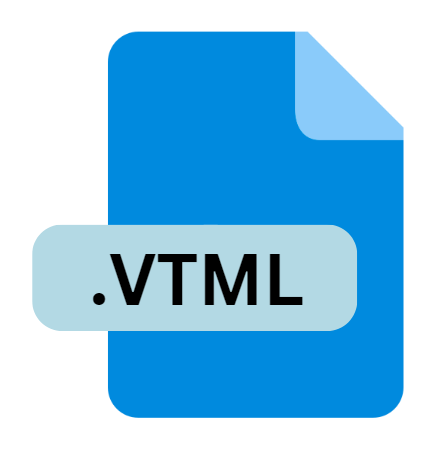.VTML File Extension

Visual Tool Markup Language File
| Developer | Adobe Systems |
| Popularity | |
| Category | Developer Files |
| Format | .VTML |
| Cross Platform | Update Soon |
What is an VTML file?
One such format is the .VTML file extension, which stands for Visual Tool Markup Language File. These files play a significant role in storing and organizing data for visual tools and applications.
This article aims to delve into the intricacies of .VTML files, exploring their origins, structure, conversion methods, and compatibility across different operating systems.
More Information.
The inception of .VTML files can be traced back to the evolution of graphical user interfaces (GUIs) and visual programming environments.
Initially, developers relied on proprietary formats or ad-hoc solutions to store interface layouts and design specifications. However, the lack of standardization hindered interoperability and portability across different platforms.
To address these challenges, the concept of a markup language specifically tailored for visual tools gained traction. .VTML files were designed to encapsulate various aspects of visual elements, including their position, size, appearance, and behavior.
This standardized approach facilitated seamless integration with development frameworks, IDEs (Integrated Development Environments), and design tools, enhancing productivity and collaboration among developers and designers.
Origin Of This File.
The .VTML file extension originated from the need for a structured format to store data utilized by visual tools and applications.
As technology advanced, developers sought efficient ways to manage and represent graphical user interfaces, interactive designs, and multimedia content.
Thus, the Visual Tool Markup Language (VTML) emerged as a solution, providing a standardized format for describing visual elements, their properties, and behaviors.
File Structure Technical Specification.
.VTML file follows a structured format based on XML (eXtensible Markup Language), making it human-readable and easily parsable by software applications.
At its core, a .VTML file consists of hierarchical elements representing different components of a visual interface. These elements may include:
- Containers: Representing layout structures such as grids, stacks, or panels.
- Widgets: Describing individual UI components such as buttons, text fields, images, and multimedia objects.
- Properties: Defining attributes like position, size, color, text content, and event handlers associated with each widget.
- Behaviors: Specifying interactive functionalities, animations, and user interactions triggered by events.
The technical specification of .VTML files may vary based on the specific requirements of the visual tool or application. However, adherence to XML standards ensures compatibility and interoperability across different platforms and development environments.
How to Convert the File?
Converting .VTML files to other formats or vice versa may be necessary to facilitate compatibility or interoperability with different tools and platforms. Several methods and tools are available for converting .VTML files, including:
- Export/Import Functionality: Many visual design tools and development frameworks offer built-in support for exporting and importing .VTML files, allowing seamless integration into existing workflows.
- Conversion Libraries: Third-party libraries and utilities may provide APIs (Application Programming Interfaces) or command-line tools for batch conversion of .VTML files to formats such as JSON (JavaScript Object Notation) or proprietary formats used by specific applications.
- Custom Scripts: Developers can create custom scripts or plugins to automate the conversion process, leveraging XML parsing libraries and data transformation techniques to convert .VTML files to desired formats.
Advantages And Disadvantages.
Advantages:
- Portability: .VTML files can be easily shared and transferred between different development environments and platforms without loss of fidelity.
- Interoperability: Standardized syntax and structure facilitate seamless integration with various development frameworks and design tools.
- Maintainability: Clear separation of content and presentation enables easier maintenance and updates to visual interfaces.
- Extensibility: XML-based format allows for easy extension and customization to accommodate evolving requirements and design patterns.
Disadvantages:
- Complexity: Managing and manipulating .VTML files directly may require familiarity with XML syntax and document structure, posing a learning curve for novice users.
- File Size: Depending on the complexity of the visual interface, .VTML files may become large and cumbersome, impacting performance and storage requirements.
- Limited Rendering: While .VTML files describe the structure and properties of visual elements, the rendering and presentation may vary based on the capabilities of the target platform or runtime environment.
- Compatibility Issues: Older versions of visual tools or applications may have limited support for .VTML files, necessitating conversion or compatibility layers.
How to Open VTML?
Open In Windows
- Visual Studio: Microsoft’s integrated development environment supports XML editing and provides syntax highlighting and validation for .VTML files.
- Notepad++: A versatile text editor for Windows that offers syntax highlighting and XML formatting for viewing and editing .VTML files.
Open In Linux
- gedit: The default text editor for GNOME desktop environments in Linux distributions, offering basic XML editing capabilities for .VTML files.
- Vim: A highly configurable text editor available on Linux systems, with plugins and syntax highlighting support for XML files including .VTML extensions.
Open In MAC
- Xcode: Apple’s IDE for macOS includes XML editor features, making it suitable for viewing and editing .VTML files within a development environment.
- TextWrangler: A lightweight text editor for macOS with support for syntax highlighting and XML validation, ideal for working with .VTML files.













